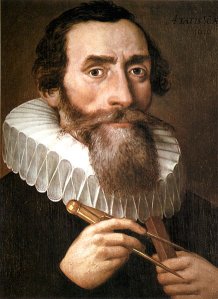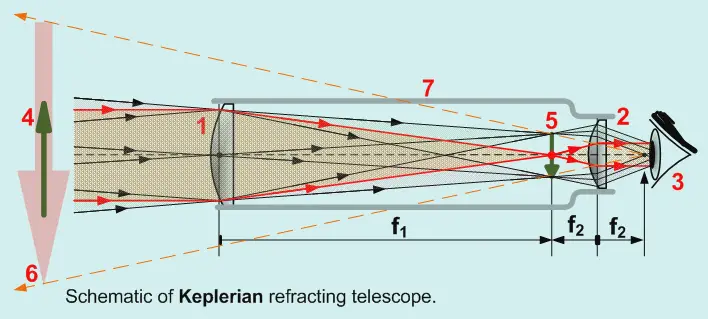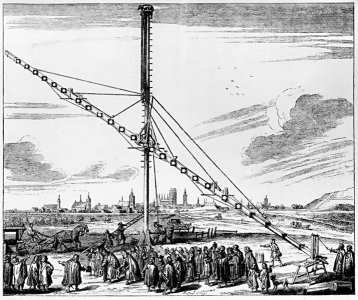(1571 – 1630) Johannes Kepler was an astronomer, telescope maker, optician and mathematician who lived in Germany. He worked as a Mathematics teacher at a school in Austria and a court mathematician to Emperor Rudolf II. He was also an assistant to the famous astronomer Tycho Brahe.
 There were two events in the childhood of Keplers life that had a dramatic impact on his choice to work in astronomy and optics. First, at the age of 6 he observed the Great comet of 1577. Later, at age nine, he witnessed a lunar eclipse.
There were two events in the childhood of Keplers life that had a dramatic impact on his choice to work in astronomy and optics. First, at the age of 6 he observed the Great comet of 1577. Later, at age nine, he witnessed a lunar eclipse.
His first major written work was the Mysterium Cosmographicum (The Cosmographic Mystery) and it was a defense of the Copernican system where the planets revolved around the sun rather than everything revolving around the earth.
Keplerian Telescope
Table of Contents
He is best known for several things including his books “Eponymous laws of Planetary motion”, Astronomia nova, Harmonices Mundi and Epitome of Copernican Astronomy. He is also the inventor of the Keplerian Telescope which was a distinct improvement over the Galilean telescope. Keplers telescope used a convex lens at the eyepiece rather than a concave one. This gave the telescope a greater field of vision and better eye relief but it did necessitate a longer focal length.

Most images observed with a Galilean telescope were distorted and out of focus due to a flawed design, most prominently an inefficient lens shape and narrow field of view. Magnification was also restricted to about 30 times normal size. Kepler improved on Galileo’s design by employing a convex lens for the eyepiece rather than a concave lens, as Galileo did. This provided a wider field of view and higher magnification, but the images were inverted, so anything seen through the telescope was upside down. The problem with this design was that the telescope needed to be longer in order to increase magnification further. The longest of these telescopes noted had a focal length of 150 feet and was unable to support its own weight.
His Big Claim to Fame
Kepler is probably most famous for his Laws of Planetary Motion. In these he more accurately predicted the position and movement of the planets because he broke away from the concept that planets moved in circles. He proposed rather that they moved in ellipses. Which we know to be correct.
Tycho Brahe delegated the task of analyzing Tycho’s observations of Mars to Kepler. Of all the planets, Mars’ predicted position had the most errors and thus posed the most difficulty. Before the invention of the telescope, Tycho’s data were the best available, and the accuracy was good enough for Kepler to show that Mars’ orbit would precisely fit an ellipse.
- Law 1: Law of Ellipses – The orbit of each planet is an ellipse.
- Law 2: Law of Equal areas – A line drawn from a planet to the sun sweeps out equal areas in equal times.
- Law 3: Harmonic Law – The square of the orbital period of a planet is directly proportional to the cube of its average distance from the sun.

Books by and about Johannes Kepler
Kepler – Definitive biography by foremost scholar offers fascinating erudite picture of great mathematician’s scientific accomplishments: formulation of laws of planetary motion, work with optics and calculus, much more. Also detailed chronicle of Kepler’s public and personal life (childhood and youth, education, mother’s trial as a witch, fear of religious persecution, etc.). Introduction and Notes by Owen Gingerich. Bibliography.
